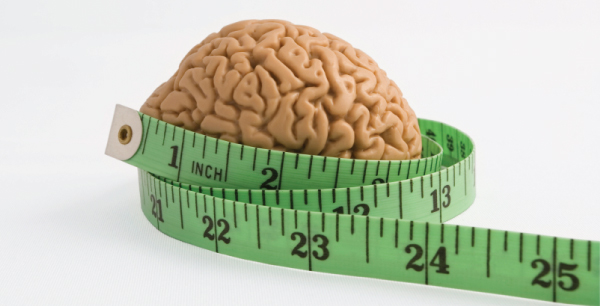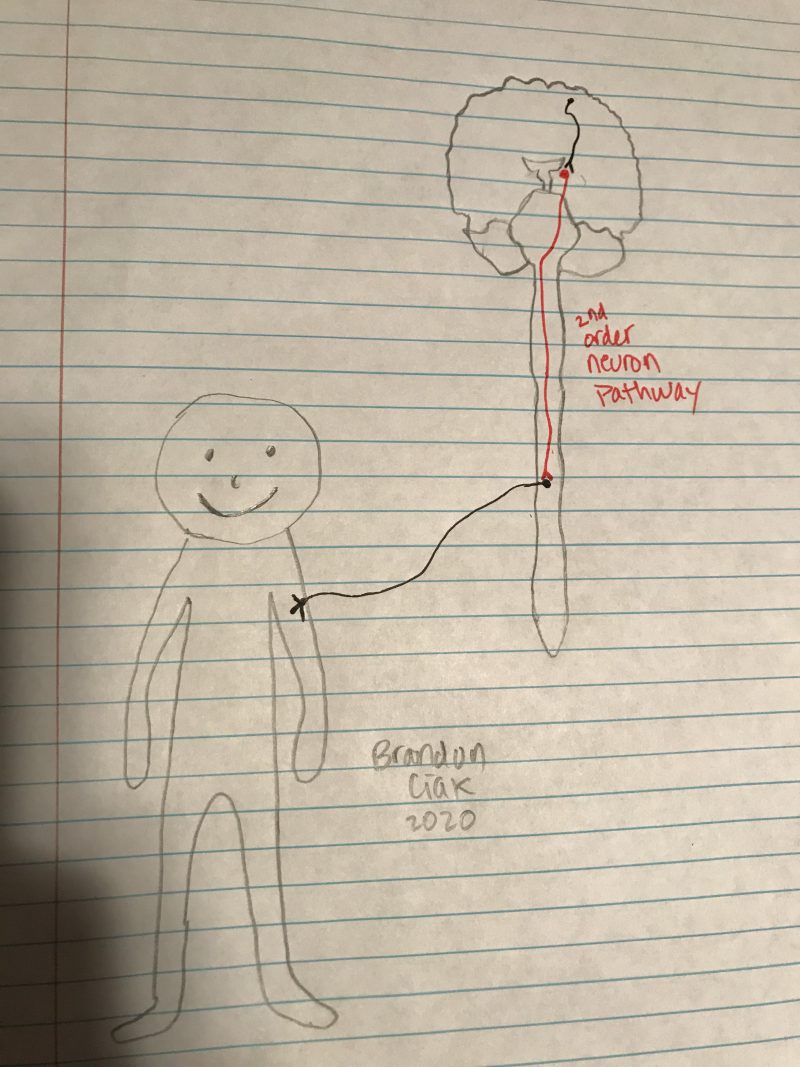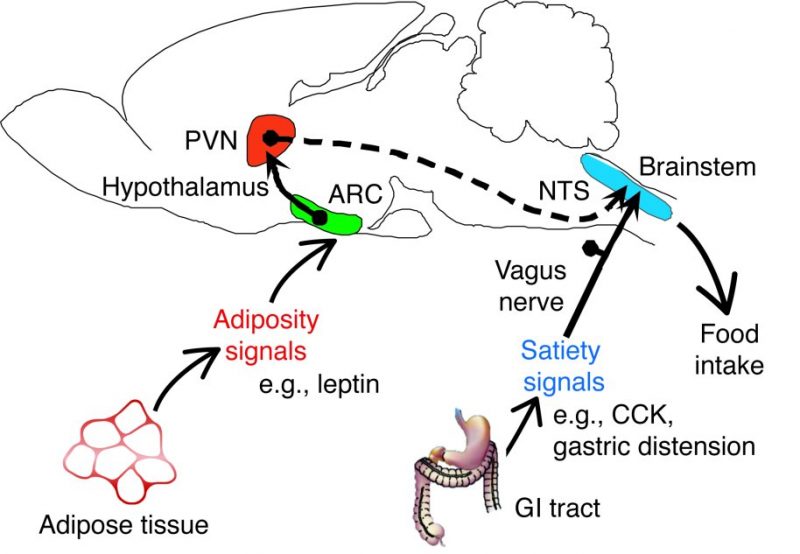
Each year this seems to continue to be a “hot topic” as well as on the forefront of many American’s mind. Something that, statistically, seems to be increasing as in years past and remains a challenging matter to talk to anyone about, family or patient. This is obesity. What causes it? It seems as of late, there has been an increased focus on the hypothalamus and inflammation. Could there be such a pathway that outlines the “need” we feel to eat just one more candy bar or plate of food at the buffet?
Bain and Body communication 101
So, how does our body communicate with our brain and vice versa? Mainly through the use of neurons, cells that transfer information between our brain and the  environment around us. Generally, we can think of these neurons communicating body wide, with first-order neurons receiving the signals from our limbs and ultimately transferring them up to the brain with the help of second motor neurons that act as an “intermediate”, running the signal up the spinal cord and to the brain before sending the message to another neuron.
environment around us. Generally, we can think of these neurons communicating body wide, with first-order neurons receiving the signals from our limbs and ultimately transferring them up to the brain with the help of second motor neurons that act as an “intermediate”, running the signal up the spinal cord and to the brain before sending the message to another neuron.
Remember these “second-order neurons” as it will come back into the picture soon!
From Adipose to Brain
What gets the ball rolling exactly? Hormones such as leptin will be released from adipose tissues in the body and travel through the bloodstream until reaching the brain, specifically the hypothalamus. Here, it will trigger the activation of a neuron in the area of the hypothalamus known as the arcuate nucleus (ARC) that will, for our purpose, travel specifically to the paraventricular nucleus (PVN). These neurons will then pass their messages on to second-order neurons (as represented by the dotted line in the image below), which in turn will make their way to the brainstem where it will inform the body to continue eating.
More information can be found regarding the specifics of signaling and activation/inhibitions of proteins and pathways here. Of course, there are more pathways and functions that get carried out by each of the structures listed above, but what if an area of this pathway, let’s say the pathway of the second-order neurons, is damaged or gets out of whack? What then could happen? Damages to the PVN or just the pathway these neurons take to inform the brainstem of continual eating will be unable to function properly and may lead to issues such as overeating or even undereating. The damage or loss of these second-order neurons may even impact some of the inflammation regulator proteins such as CCKs that plays a role in feeding behavior.
Of course, there are more pathways and functions that get carried out by each of the structures listed above, but what if an area of this pathway, let’s say the pathway of the second-order neurons, is damaged or gets out of whack? What then could happen? Damages to the PVN or just the pathway these neurons take to inform the brainstem of continual eating will be unable to function properly and may lead to issues such as overeating or even undereating. The damage or loss of these second-order neurons may even impact some of the inflammation regulator proteins such as CCKs that plays a role in feeding behavior.
Looking Ahead
This raises questions beyond the role that second-order neurons play within the brain and body, as in if this is what initially causes obesity to start occurring or if it is a side product of something larger. Is it and/or should it start being considered more of a mental illness under categories such as addiction? Are there true relationships between obesity and other areas of health such as Alzheimer’s disease or Type 2 Diabetes? With many additional aspects and environmental factors, it remains a challenge to determine what the “main contributor” could be for such a topic. This is why continual research is needed as well as the spread of information to the general public as a whole.
